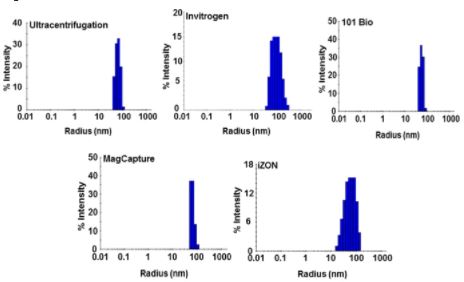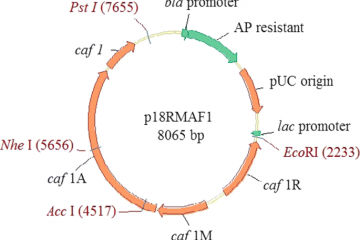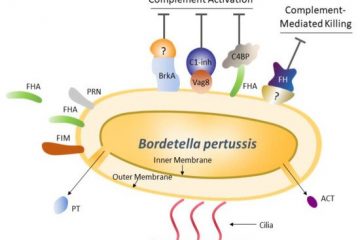Exosome Isolation Kits
A high-efficient exosome isolation kit can help a lot for every exosome researchers. High purity, high yield, and easy operation make it a great research tool.
As we know, exosomes are small membrane vesicles (30–150 nm) of endocytic origin, which are shed by all cell types under normal- and patho-physiological conditions. Exosomes have pleiotropic physiological and pathological functions and play significant roles in diverse pathological conditions such as cancer, infectious and neurodegenerative diseases.
Exosomes have received significant attention for their roles in pathobiological processes and are being explored as a tool for disease diagnosis and management. Consequently, various isolation methods based on different principles have been developed for exosome isolation such as differential ultracentrifugation, density gradient ultracentrifugation, ultracentrifugation, chromatography, magnetic bead immunoassay, polypolymer precipitation method, etc. However, the quick and easy operation of exosome isolation kits is irreplaceable.
CUSABIO Exosome Isolation Kits purify exosome by affinity purification. High Purity exosomes and other Evs (Extracellular vesicles) from cell culture medium and body fluid (high yield by normal microfiltration) can be easily obtained by this method.
Application |
Isolate pure exosome from cell culture media (supernatant). This kit yields much higher purity than exosome precipitation method. This product is for research use only. |
Yield |
Each reaction can process 2 ~ 4 ml cell culture medium. The yield of each reaction can yield pure exosome suspended in 50 ~ 200 µl PBS . |
Description |
P100 kit is for exosome purification / isolation at high yield and purity from cell culture media.
Use as little as 2 ml cell media to achieve high yield of exosomes for any downstream applications: EM study, exosome label, exosome subpopulation, qRT-PCR profiling of exosomal miRNAs, and gel analysis of exosomal proteins. |
Shipping / Storage |
Ship and store at room temperature. Upon receiving keep all bottles upright, in cool and dark place. |
Shelf Life |
12 months |

PureExo Exosome Isolation kit
Abstract
Exosomes have received significant attention for their role in pathobiological processes and are being explored as a tool for disease diagnosis and management. Consequently, various isolation methods based on different principles have been developed for exosome isolation. Here we compared the efficacy of four kits from Invitrogen, 101Bio, Wako and iZON along with conventional ultracentrifugation-based method for exosome yield, purity and quality. Cell culture supernatant was used as an abundant source of exosomes, and exosome quantity, size-distribution, zeta-potential, marker-expression and RNA/protein quality were determined.
The Invitrogen kit gave the highest yield but the preparation showed broader size-distribution likely due to microvesicle co-precipitation and had the least dispersion stability. Other preparations showed <150 nm size range and good stability. Preparation from iZON column; however, had a broader size-distribution in the lower size range suggestive of some impurities of non-vesicular aggregates.
RNA quality from all preparations was comparable; however, proteins from Invitrogen method-based exosomal preparation showed polyethylene glycol (PEG) contamination in mass spectrometry. Chemical impurities from the precipitant could also be the cause of toxicity of Invitrogen method-based exosomal preparation in biological growth measurement assay. Together, these findings should serve as a guide to choose and further optimize exosome isolation methods for their desired downstream applications.
- Suitable for many downstream experiments
The experiments include Transmission electron microscope analysis, Nanoparticle tracking analysis, NanoFCM analysis, Western Blot, Fluorescence quantitative (qPCR), High-Throughput Sequencing, etc.
- Suitable for a variety of sample types
CUSABIO Exosome isolation kit provides a simple and reliable method to extract intact exosomes from the cell culture supernatant, serum, plasma, latex, urine, saliva.
[Linking template=”default” type=”products” search=”Exosome Isolation kit ” header=”1″ limit=”27″ start=”2″ showCatalogNumber=”true” showSize=”true” showSupplier=”true” showPrice=”true” showDescription=”true” showAdditionalInformation=”true” showImage=”true” showSchemaMarkup=”true” imageWidth=”” imageHeight=””]


